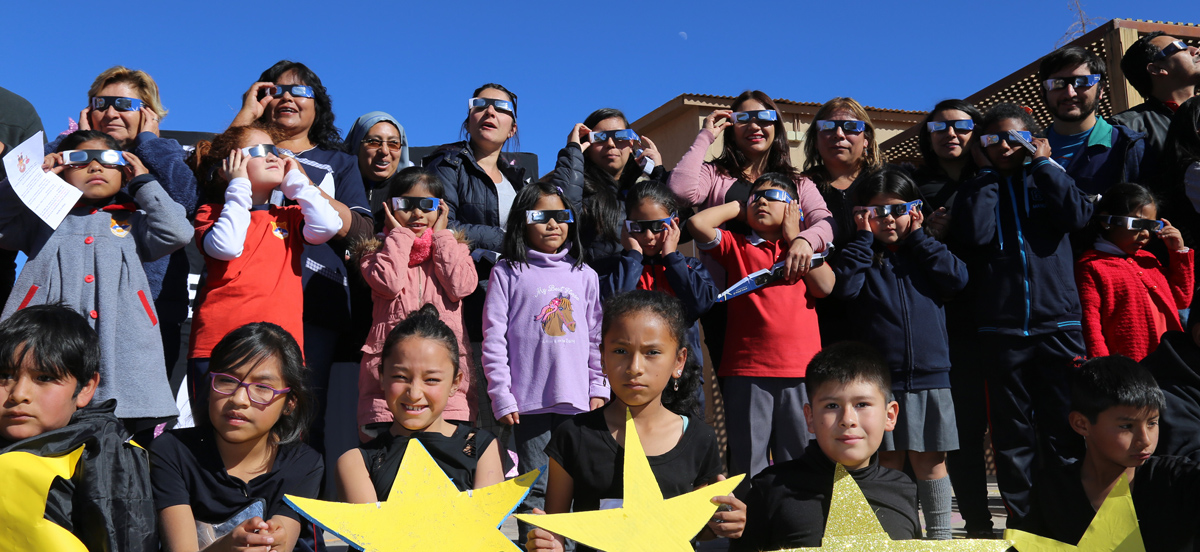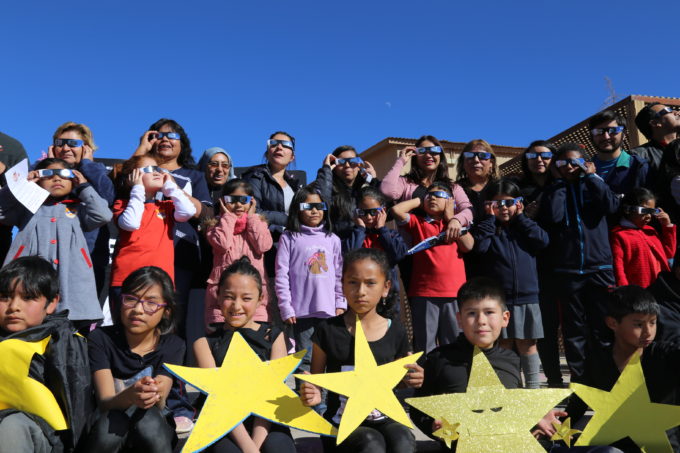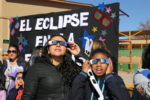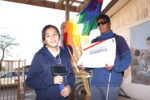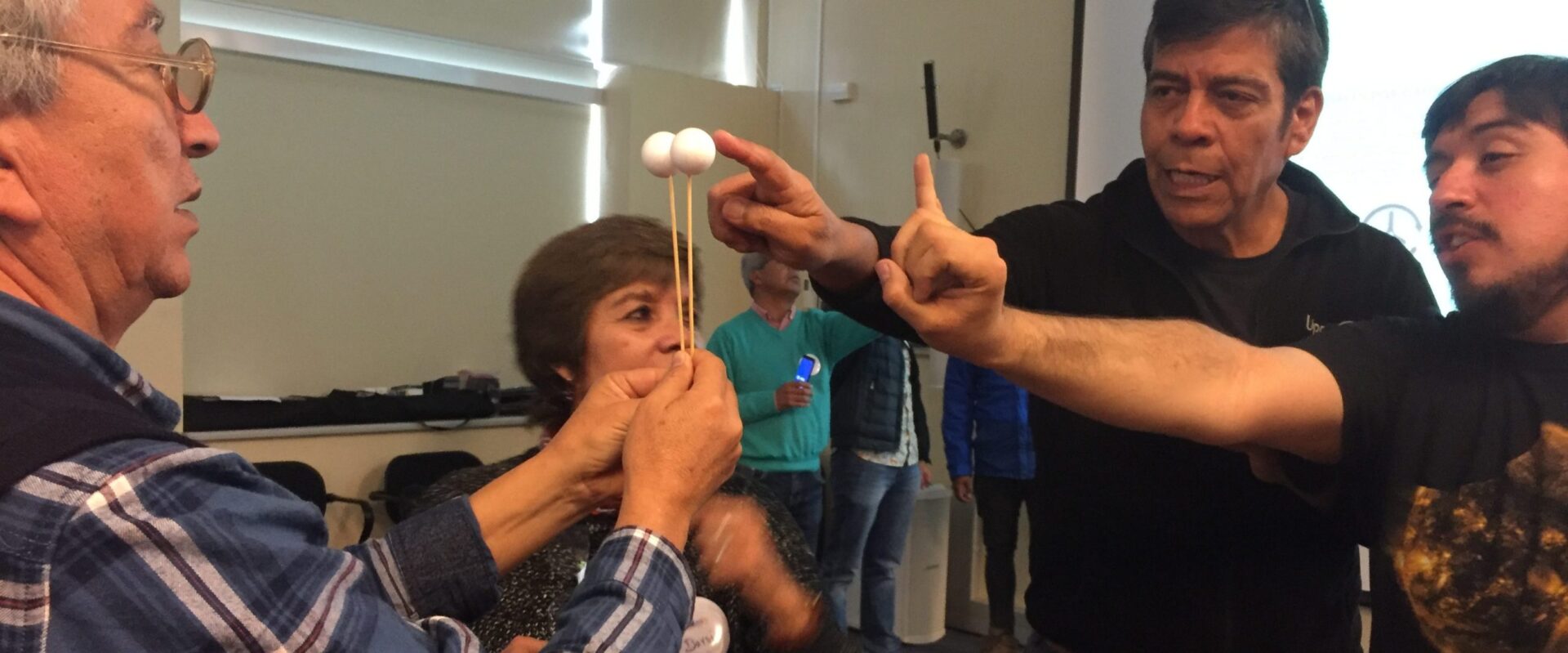San Pedro de Atacama and Toconao students prepare for the solar eclipse
The ALMA Observatory handed out solar eclipse glasses to students and teachers in San Pedro de Atacama’s elementary and high school and the Toconao Educational Complex, ensuring that they are ready to safely view the solar eclipse on July 2.
“I really like the glasses because it lets us see how weird eclipses are, when the Sun and Moon actually come together and hug each other,” said Sofía Acevedo, 4th grade student at School E-26 in San Pedro de Atacama. She and 930 other students and 50 teachers received new glasses from ALMA.
In a gesture of appreciation, the schoolchildren reenacted an allegory of the creation of the Sun and the Moon, which included a specific explanation about what produces an eclipse. “The kids are really motivated with the eclipse,” said Gabriela Carriel, elementary school teacher at E-26, who will be joining other teachers at the school on the day of the eclipse to share experiments they learned at a workshop held at ALMA a few weeks ago.
“We want all children and young people who live near the ALMA Observatory to enjoy and learn from this unique phenomenon. Even those with visual disabilities,” said Education & Public Outreach Officer, Valeria Foncea, during her visit to the Toconao Educational Complex. In addition to providing glasses to over 300 members of the school community, ALMA also handed out the following special materials designed for blind people, specifically for one of its students:
- The book “Open your senses to eclipses: South America,” published by NASA and Edinboro University (Pennsylvania), with tactile graphs and Braille to illustrate the alignment of the Sun, the Moon and the Earth and the stages of the eclipse to blind people. It also identifies the geographic zones where total solar eclipses can be seen in 2019 and 2020 in Chile and Argentina.
- The device known as LightSound 2.0, which transforms light into sound, allowing blind children to “hear the eclipse” in real time. Using Arduino technology, this device designed and developed by Harvard University, is a tool that detects light through a light sensor and converts it into sound that varies based on brightness. As the Moon eclipses the Sun, the observer experiences the attenuation of light, and meanwhile the sound decreases and has a lower pitch in the dark. The International Astronomical Union (IAU) and Universidad Diego Portales (UDP) have made 11 of these devices available in Chile. Each of the devices will be installed in different locations around the country, such as Toconao, thanks to ALMA.
- The “AstroBVI” Kit,which consists of galaxies printed in 3D to explain their slope, distinguish the brightest stars and understand concepts such as the fusion of galaxies in the Universe. This material was donated by the Office of Astronomy for Development (OAD) of IAU.
In addition to its role as neighbor in the community of San Pedro de Atacama, ALMA also handed out glasses to students in Antofagasta, Coquimbo, Buin and San Miguel.
ALMA will also be represented during this eclipse through activities offered by the Santiago Planetarium with ALMA Sounds’, where DJ School Chile will transform sounds from space and interpret them as musical compositions for the eclipse party.
Finally, as part of an ALMA-Conicyt-funded project to bring astronomic investigation to schoolchildren with visual disabilities, students from the Astronomy Club of the Santa Lucía School for the Blind will share inclusive activities with their classmates on the day of the Solar Eclipse, with the support of Universidad Diego Portales.
Images
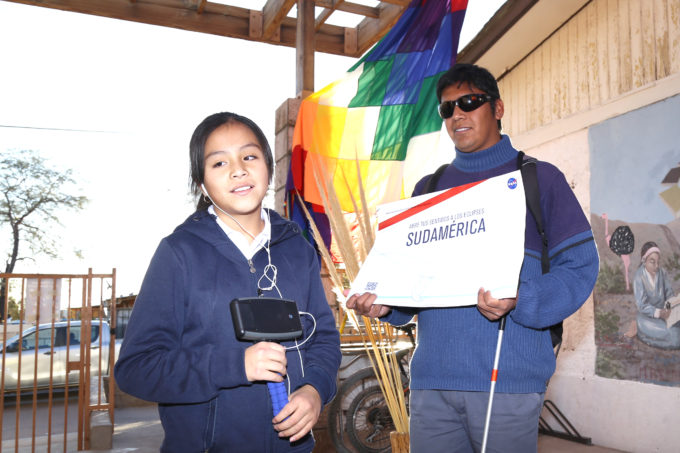
Tactile graphics, resources in Braille and a device that transforms light into sound, will allow blind people to learn and experience the solar eclipse in real time. Credit: ALMA (ESO/NAOJ/NRAO)
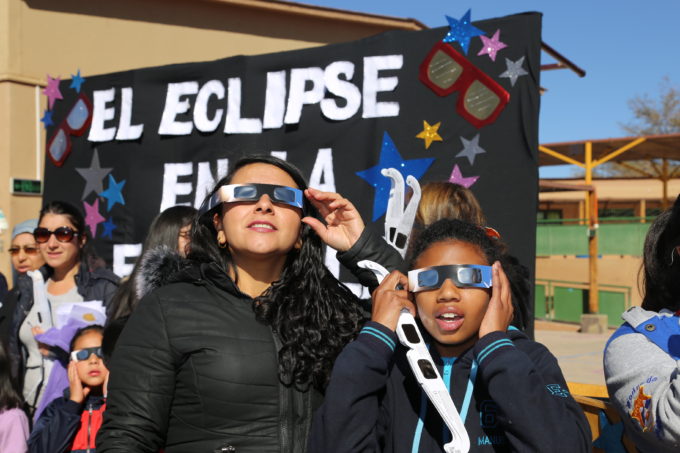
Students and teachers from schools of San Pedro de Atacama and Toconao received solar glasses from ALMA to observe the solar eclipse safely. Credit: ALMA (ESO/NAOJ/NRAO)
Contacts
-
Valeria Foncea
Education and Public Outreach ManagerJoint ALMA Observatory Santiago - ChilePhone: +56 2 2467 6258Cel: +56 9 7587 1963Email: [email protected]
